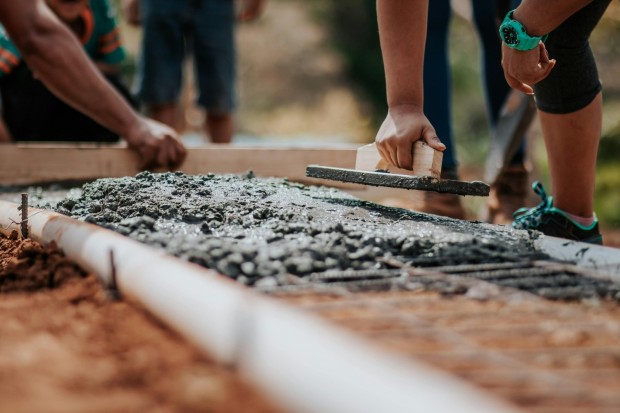Researchers at the University of Manchester have unlocked a groundbreaking technique to fortify concrete using graphene, just one atom thick material. Integrating graphene into the mixture bolsters concrete strength and reduces cement usage, potentially revolutionizing construction practices and cutting costs.

(Photo : Pexels/ Rodolfo Quirós)
Durability of 2D Material
Researchers affiliated with the University of Manchester in England recently discovered a potential remedy. The researchers claimed that they were able to strengthen concrete by incorporating a substance known as graphene into the mixture, which also decreased the amount of cement required. As mentioned, carbon atoms are arranged in a layer called graphene, at least one atom thick.
Moreover, the technique reduces the cost of producing concrete, as the researchers stated in a paper published by the university. This results in cost savings that, in principle, might be passed on to the product's beneficiaries. When blended into concrete, graphene, which the researchers referred to as a '2D material,' improves bonding on a microscopic level. This process makes the material more robust, long-lasting, and corrosion-resistant.
Additionally, it can be added directly to pre-existing concrete mixtures, which means that training and additional equipment are not required. Scientists have developed a variety of 'green concrete' in recent years, and graphene-enhanced concrete is one of many options available to them.
Some other approaches involve injecting carbon dioxide into concrete, producing concrete from spent coffee grounds, utilizing waste materials from the sugar refining process, and using concrete alternatives such as Ferrock. Other potentially fascinating applications of graphene include, most notably, its use in the production of more efficient batteries for electric vehicles.
Also Read: Lego-Type Brick's Potential to Replace Concrete and Cement
Other 2D Material Researches
Graphene and molybdenum disulfide (MoS2) are two examples of two-dimensional materials that display distinctive features that provide great potential for use in various fields, including biomedicine, electronics, sensing, and energy storage, among others. Nevertheless, due to their intricate development mechanisms, which are characterized by inconsistent connections between the ways in which the environment for growth influences the morphologies of crystals, researchers have been faced with a substantial obstacle.
This difficulty was addressed by a research team at Rice University's George R. Brown School of Engineering, which developed a miniature chemical vapor deposition (CVD) apparatus capable of observing and recording the formation of two-dimensional MoS2 crystals in real-time.
According to Jun Lou, an associate dean of the Department of Materials Science and Nanoengineering and a professor at Rice University, this multidisciplinary approach represents a significant advancement in the scalable synthesis of two-dimensional materials.
One of the significant discoveries the researchers could derive from the real-time film was the capacity to predict the circumstances required to grow giant single-layer MoS2 crystals. The researchers made this possible by utilizing powerful image processing and machine learning methods.
The findings that were discovered by the study team have significant repercussions for the development of two-dimensional materials in the future. The researchers, inspired by their triumph with MoS2, are confident that their methodology can be applied to additional two-dimensional materials and heterostructures, thereby providing a robust foundation for developing and fabricating advanced two-dimensional materials featuring customized characteristics.
Related Article: Minnesota Explores Hemp as a Sustainable Solution for Erosion Control







